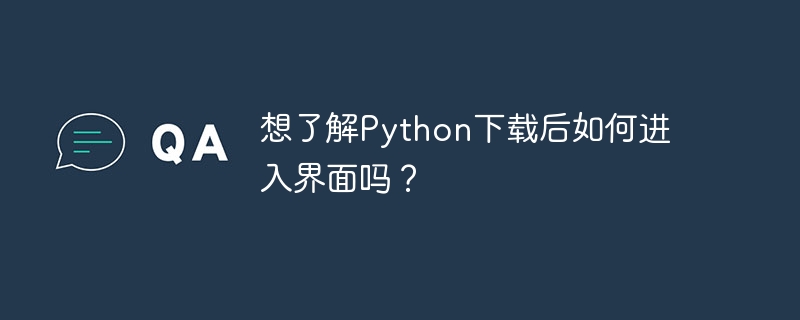
After Python is downloaded, you can enter the interface through the following steps: 1. Install and verify Python; 2. Start the Python shell; 3. Write code; 4. Exit the Python shell. In actual combat, you can use the Tkinter library to create a window: 1. Import the library; 2. Create the main window; 3. Set the title and size; 4. Create a label; 5. Start the event loop.

How to enter the interface after downloading Python
After downloading Python, you can enter the interface through the following steps:
Install and verify Python:
python --version command in the terminal or command prompt to verify whether Python has been successfully installed. Start the Python shell:
python command in the terminal or command prompt . This will start the Python 3 shell. python2 command. Writing code:
print("Hello, world!") and press the Enter key, you can see the text "Hello, world!" printed to the console. Exit the Python shell:
exit() or quit() command and press Enter. Practical case: Create a window
We can use the Tkinter library to create a simple window:
import tkinter as tk
# 创建一个主窗口
root = tk.Tk()
# 设置窗口标题
root.title("My Window")
# 设置窗口大小
root.geometry("300x200")
# 创建一个标签
label = tk.Label(root, text="Hello, Python!")
label.pack()
# 启动窗口事件循环
root.mainloop()Running this code will create a window called "My Window" containing a label that displays the text "Hello, Python!"
The above is the detailed content of Want to know how to enter the interface after downloading Python?. For more information, please follow other related articles on the PHP Chinese website!




